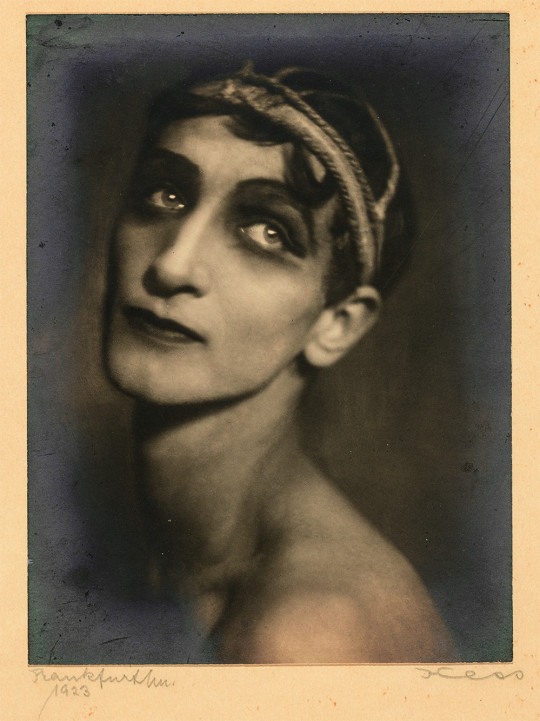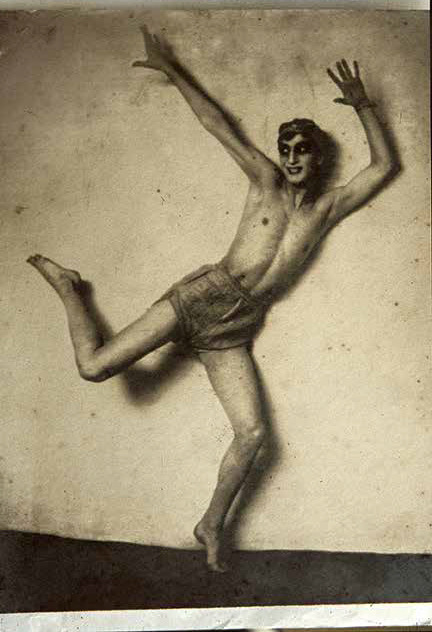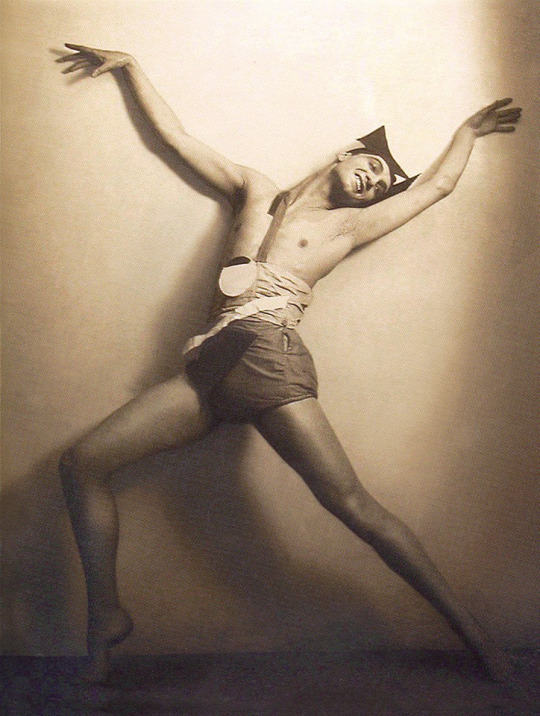#aleksander rumnev
Text

Nini & Carry Hess :: Alexander Rumnev (Tänzer), 1923. Galerie Berinson Berlin | src Museum Giersch der Goethe-Universität
view on wordPress
#nini and carry hess#alexander rumnev#dance pioneer#portrait#aleksander rumnev#aleksandr ziakin#danseur#tanzer#women artists#nini und carry Heß#nini und carry hess#Porträt#retrato#ritratto#portret#retrat#Bildnis#role portrait#rollenportrat#a. rumnev#1920s#male dancer#women photographers#lgbtq
121 notes
·
View notes
Text

Nini & Carry Hess :: The Russian dancer Aleksandr Aleksandrovich Ziakin (1899-1965), known as Rumnev or Rumnieff. Published in 'Die Dame' 21/1924. | src Getty Images

Nini & Carry Hess :: Alexander Rumnev (Tänzer), 1924. | src Museum Giersch der Goethe-Universität
view in hi-res on wordPress
#nini and carry hess#aleksander rumnev#alexander rumnev#dancer#danseur#tanzer#dance pose#die dame#tanzpose#hauntedbystorytelling#nini und carry hess#aleksander ziakin#alexander ziakin#russian dancer#1920s#male dancer#ballet dancer#ballerino
131 notes
·
View notes
Text

Dance pioneer Aleksandr Aleksandrovich Ziakin (1899-1965), known as Rumnev, who took his pseudonym from the family estate, Rumnia. | src The Calvert Journal (Poetry in Motion)
View on WordPress
#1920s#a. rumnev#aleksander rumnev#aleksandr ziakin#alexander rumnev#danseur#modern dance#plastic dance#tanzer#tanzmoderne#tanzpose#dancer#russian dancer
67 notes
·
View notes
Photo


Otton Engel’s :: A. Rumnev in one of L. Lukin’s choreographies, 1923. Pencil on paper. Inscribed and dated: “Chamber Theatre, Thursday, 7.30, 12/VI/1923”. Catalogue of the first “Art of Movement” exhibition, 1925, Nº 197. OE (Otton Engel’s repository, Moscow. Formerly in the collection of Irina Malakhova.)
Hess Studio [Nini & Carry Hess] :: A. Rumnev. Plastic study, 1923. Original print. Signed and dated on mount: “Hess, Frankfurt 1923”. Choreography by L. Lukin. Tournée of the Moscow Chamber Theatre, 1923. The reverse of an analogous print in the Lukin archive at GTsTMB carries the inscription: “To dear Lev Lukin with faith in his inimitable talent, 1923, A. Rumnev”. RGALI [Rossiiskii gosudarstvennyi arkhiv literatury i iskusstva (Russian State Archive of Literature and Art, Moscow)]
source Nicoletta Misler's The Russian Art of Movement 1920-1930
#otton engels#nini and carry hess#the russian art of movement#hess studio#a. rumnev#1920s#alexander rumnev#aleksander rumnev#the art of movement#lev lukin#tnau#tanzer#danseur#danse#dance#modern dance#o. engels#dance pose#tanzpose#tanzmoderne#art of movement#illustration#drawing#nini und carry hess
64 notes
·
View notes
Photo

Dancer, Moscow, 1920
Nikolai Ivanovich Svishtov (pseudonym Paola) :: Dancer, Moscow, 1920. (maybe Aleksander Rumnev, Soviet dancer and actor of the Kamerny Thatre) | src Masterpieces of Soviet Photography (2018)
#1920#1920s#aleksander rumnev#alexander rumnev#dance#dance pose#dancer#nikolai ivanovich svishtov#Nikolay Ivanovich Svishchov#paola studio#soviet photography#svishtov paola#Nikolai Svishtov-Paola#a. rumnev
128 notes
·
View notes
Photo


Nikolai Ivanovich Svishtov (pseudonym Paola) :: Aleksander Rumnev, Soviet dancer and actor of the Kamerny Thatre. Negative medium format, gelatin silver print w/ chemical toning. The pictures were probably taken as part of the program “The Art of Movement” (GAKhN, 1924-1927). | sources: RGALI collection [Rossiiskii gosudarstvennyi arkhiv literatury i iskusstva (Russian State Archive of Literature and Art, Moscow)] and Isadora Duncan; the Russian years
read and view more on wordPress
Why little Sasha start dancing? (text updated 2020)
Soviet dance pioneer Aleksandr Aleksandrovich Ziakin (1899-1965), known as Rumnev or Alexander Rumnev, took his pseudonym from the family estate: Rumnia.
Rumnev started dancing after his parents had told him about Duncan’s performance in Moscow in 1905. From an early age, Aleksandr Rumnev (1899-1965) dreamt of dancing. In 1918 he took up ballet classes, and a friend brought him to Liudmila Alekseeva’s studio. For the talented student, Alekseeva choreographed several dances to the music by Rakhmaninov and a dance of the ocean wave to the etude by Carl Czerny. Tall, slim and flexible, Rumnev was a born dancer, and within a year he had already founded his own company. He also performed with other companies including Lev Lukin’s Free Ballet (see below). The art critic Aleksey Sidorov found him «stunning»; he believed that «even the West» could be proud of such dancer.
[...]
In 1920 Rumnev joined the Chamber Theatre (Kamernyi Teatr) as a pantomime actor and teacher. He also choreographed his own «grotesque» dances commenting that «this was a tragic grotesque». One of his solos, The Last Romantic, to music by Scriabin, was about a «contemporary Don Quixote». Yet, for the new proletarian culture, Rumnev was «too refined, he moved too elegantly, waving with aristocratic narrow hands, striking with broken movement of long arms and legs». Critics found him old-fashioned and ‘decadent’. He was also gay which became criminalized under Stalin. In 1933 Rumnev fled Moscow. Several years later he was arrested in the provinces and served a prison sentence. In 1962 he finally succeeded in founding the Experimental Theatre for Pantomime, the genre he had been committed to from the beginning. Sadly, Rumnev died two years later, and his theatre did not survive his death.
quoted from Irina Sirotkina: The Revolutionary Body, or Was There Modern Dance in Russia?
#alexander rumnev#aleksander rumnev#Nikolay Ivanovich Svishchov#paola#svishtov paola#dancer#russian dancer#dance pose#actor#1920s#dance costume#grimace#gesture#paola studio#Nikolai Svishtov-Paola#a. rumnev#Irina Sirotkina#the russian art of movement#the art of movement#the revolutionary body#modern dance in russia#the role of gesture#role of gesture#tanzer#danseur#male dancer
160 notes
·
View notes